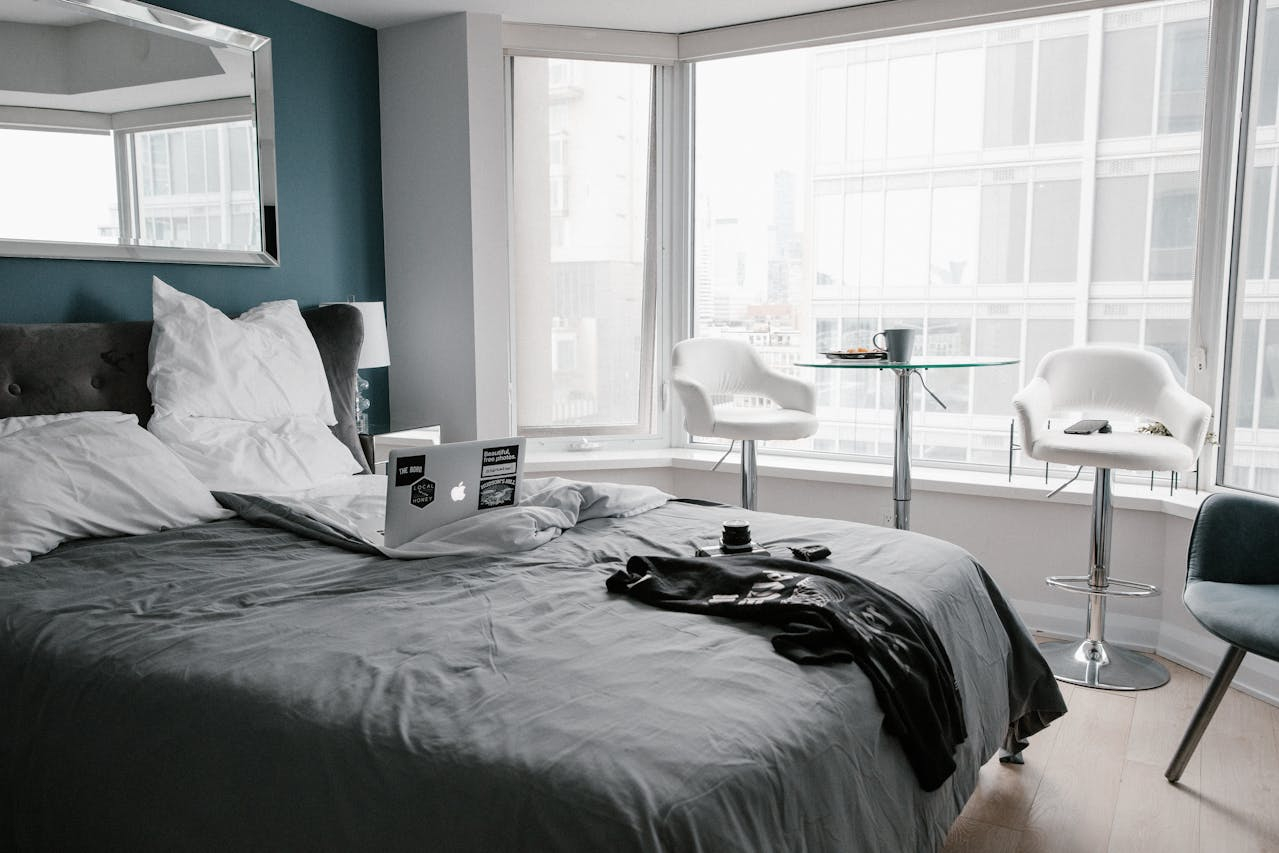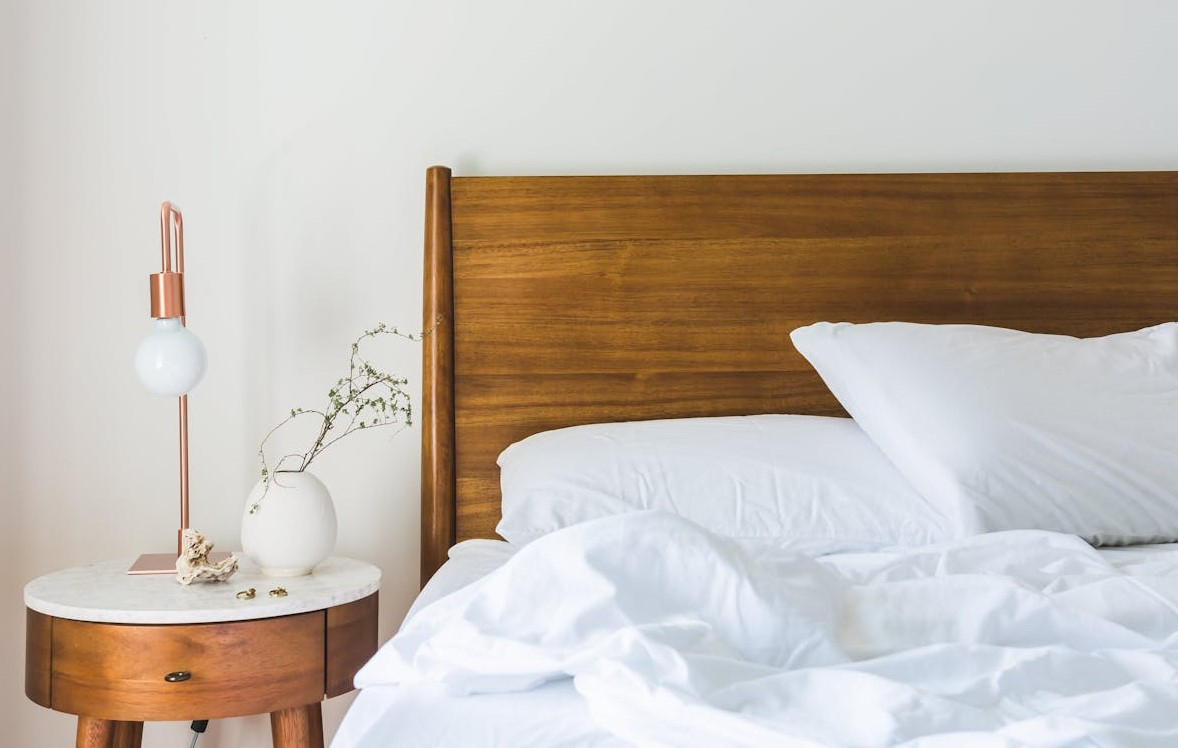Looking for practical bedroom layout ideas? Whether you're moving into a new home, redecorating, or optimizing your current space, this guide can help you make the most of your bedroom.
Arranging a bedroom goes beyond just placing furniture—it's about creating a comfortable and functional space where you can relax and recharge. From understanding the basics to exploring creative layouts for different room shapes, this resource will help you design a bedroom that truly meets your needs.
What to Consider When Choosing the Layout
Before diving into specific layout ideas, let's talk about a few key things to keep in mind:
-
Room Size and Shape: Measure your room dimensions. Knowing whether your bedroom is square, rectangular, or oddly shaped will help tailor your layout.
-
Furniture Size and Needs: Think about the furniture you already have and what you need. A king-size bed will need more space than a twin, and you'll want to consider storage options too.
-
Natural Light: Identify where the windows are. Natural light can influence where you place your bed and other furniture.
-
Flow and Accessibility: Ensure there’s a smooth flow through the room. You don’t want to bump into furniture or struggle to reach your closet.
-
Personal Preferences: Your bedroom should be a reflection of you. Think about what makes you feel comfortable and relaxed.
Creative Bedroom Layout Ideas
Now, let’s dive into some creative layout ideas to transform your bedroom into a dreamy retreat. Whether you have a small cozy room or a spacious master suite, these ideas will inspire you to make the most out of your space.
Classic Centered Bed Layout
-
Why It Works: This layout creates a balanced and symmetrical look, making the room feel organized and spacious.
-
Tips: Place the bed in the center of the main wall. Add nightstands on either side for balance. A dresser or a bench at the foot of the bed can complete the look. You can also hang artwork or a mirror above the bed to add a focal point.
Corner Bed Layout
-
Why It Works: Perfect for small rooms, this layout maximizes floor space and creates a cozy, tucked-away feeling.
-
Tips: Angle your bed in one corner to free up the center of the room. Use the opposite corner for a reading nook or a small desk. Add floating shelves above the bed for extra storage. This layout can make a small room feel more open and less cluttered.
Window View Layout
-
Why It Works: Enjoying a beautiful view first thing in the morning can boost your mood and make your bedroom feel more open.
-
Description: Position your bed facing the window. Use sheer curtains to let in light while maintaining privacy. Arrange dressers and other furniture along the walls to keep the view unobstructed. This layout works best if your window offers a scenic view or overlooks a garden.
Under-Window Bed Layout
-
Why It Works: Utilizing space under a window can create a unique focal point and make the room feel more open.
-
Description: Place your bed under a low window. Ensure your headboard is lower than the window sill. Use light, airy curtains to frame the bed and let in natural light. This layout can give a charming, cottage-like feel to your bedroom.
Diagonal Layout
-
Why It Works: Angling your bed can make the room feel larger and more dynamic, adding a touch of drama.
-
Description: Position your bed diagonally in a corner. This works best in larger rooms. Use the extra space for a seating area or a stylish rug to define the bed area. The diagonal placement can create interesting visual lines and break the monotony of straight lines.
Storage Bed Layout
-
Why It Works: Combining sleeping and storage is perfect for smaller spaces or those needing extra organization.
-
Description: Invest in a bed with built-in storage drawers or choose an ottoman bed. Use the storage for off-season clothing, extra bedding, or anything you want to keep out of sight. This layout helps keep the bedroom tidy and clutter-free.
Bunk Beds or Loft Beds
-
Why It Works: Ideal for kids' rooms or compact spaces, freeing up floor space for other activities.
-
Description: Loft beds can create a cozy sleep area with space underneath for a desk or play area. Bunk beds are great for siblings sharing a room. Personalize each bunk with individual lighting and decor. This layout maximizes vertical space, making it practical for shared rooms.
Minimalist Layout
-
Why It Works: Less is more in a minimalist bedroom, creating a serene and clutter-free environment.
-
Description: Focus on essential furniture like a bed, nightstands, and a wardrobe. Use neutral colors and simple, clean lines. Keep decor minimal to maintain a calm atmosphere. This layout promotes tranquility and a sense of order.
Luxury Layout
-
Why It Works: Perfect for large bedrooms, this layout adds a touch of sophistication and comfort.
-
Description: Create a seating area with a couple of chairs or a small sofa at the foot of the bed. Use high-quality bedding and rich textures to enhance the luxurious feel. Add a chandelier or elegant lighting fixtures for a glamorous touch. This layout creates a hotel-like ambiance.
Symmetrical Layout
-
Why It Works: Symmetry creates a harmonious and balanced look, making the room feel more put together.
-
Description: Place identical nightstands and lamps on either side of the bed. Use matching decor elements like artwork or mirrors to enhance the symmetrical look. This layout works well in master bedrooms for a polished appearance.
Multi-Functional Layout
-
Why It Works: Combining different functions in one room can make your space more versatile and practical.
-
Description: Designate a workspace with a desk near a window for natural light. Keep the bed area separate by using a room divider or a bookshelf. This layout is perfect for small apartments or shared spaces, providing distinct areas for different activities.
Gallery Wall Layout
-
Why It Works: Displaying art or photos behind your bed adds personality and makes the room feel more like home.
-
Description: Create a gallery wall above your headboard with a mix of frames and artwork. Keep other walls simple to let your gallery shine. This is a great way to personalize your space and showcase your favorite pieces.
Wardrobe Divider Layout
-
Why It Works: Using a wardrobe or bookshelf as a divider can create distinct areas within a larger room.
-
Description: Place a tall wardrobe or bookshelf between the bed and a dressing area. This can provide extra storage and a sense of privacy. Make sure the divider is sturdy and stable. This layout is ideal for creating a small dressing area or a reading nook.
Open Floor Layout
-
Why It Works: Keeping furniture minimal and low to the ground creates an open and airy feel, perfect for modern designs.
-
Description: Use low-profile furniture and avoid cluttering the room. A platform bed with simple nightstands can keep the space feeling open. Add a large rug to define the sleeping area. This layout enhances the sense of space and light in the room.
Eclectic Layout
-
Why It Works: Mixing different styles and pieces of furniture can create a cozy, lived-in feel with lots of character.
-
Description: Combine vintage and modern pieces, and don’t be afraid to experiment with colors and textures. This layout allows for a lot of personal expression and creativity. Use unique decor items to add personality and warmth to the room.

Best Way to Layout a Bedroom
The best way to layout a bedroom depends on your personal preferences and the room's specific characteristics. Generally, it's good to start with the bed, as it's the largest piece of furniture and the focal point of the room. From there, arrange other pieces like nightstands, dressers, and seating areas to complement the bed's placement. Prioritize ease of movement and accessibility, making sure there's enough space to walk around comfortably.
Ideas for Different Bedroom Shapes
Square Bedrooms
-
Centered Layout: Place the bed in the center of one wall, with nightstands on either side and a dresser opposite.
-
Corner Layout: For a unique look, angle the bed in one corner and add a reading chair in the opposite corner.
-
Symmetrical Layout: Place identical pieces of furniture on either side of the bed to create a balanced look.
Long and Narrow Bedrooms
-
Linear Layout: Align the bed and furniture along the longer wall to maximize walking space.
-
Divide and Conquer: Use a room divider or a bookshelf to create separate areas for sleeping and dressing.
-
Floating Bed: Position the bed away from the walls, possibly in the middle of the room, with walkways on either side.
L-Shaped Bedrooms
-
Zoned Layout: Use the nook for a cozy seating area or workspace, keeping the main section for the bed.
-
Corner Bed: Place the bed in the corner where the two walls meet, freeing up space in the main area.
-
Floating Furniture: Arrange furniture away from the walls to utilize the unique shape effectively.
FAQ Section
How do I make a small bedroom look bigger?
Use light colors, mirrors, and multi-functional furniture. Keep clutter to a minimum and use vertical space for storage.
Where should I place my bed in a bedroom?
Ideally, place your bed on the main wall, opposite the door, or under a window. Ensure you have a clear view of the entrance.
Can I put my bed in front of a window?
Yes, as long as it doesn't block the natural light completely. Use a lower headboard to maintain an open feel.
How can I create more storage in my bedroom?
Use under-bed storage, add shelves, and choose furniture with built-in storage. Consider a storage bench or ottoman.
What's the best way to arrange furniture in a large bedroom?
Create distinct zones for sleeping, dressing, and relaxing. Use rugs to define spaces and avoid pushing all furniture against the walls.
How can I make my bedroom more relaxing?
Choose calming colors, invest in comfortable bedding, and minimize electronics. Add soft lighting and incorporate personal touches that make you happy.
Remember, the best bedroom layout is one that suits your personal style and meets your needs. Have fun experimenting with these ideas and creating a space that feels just right for you!


